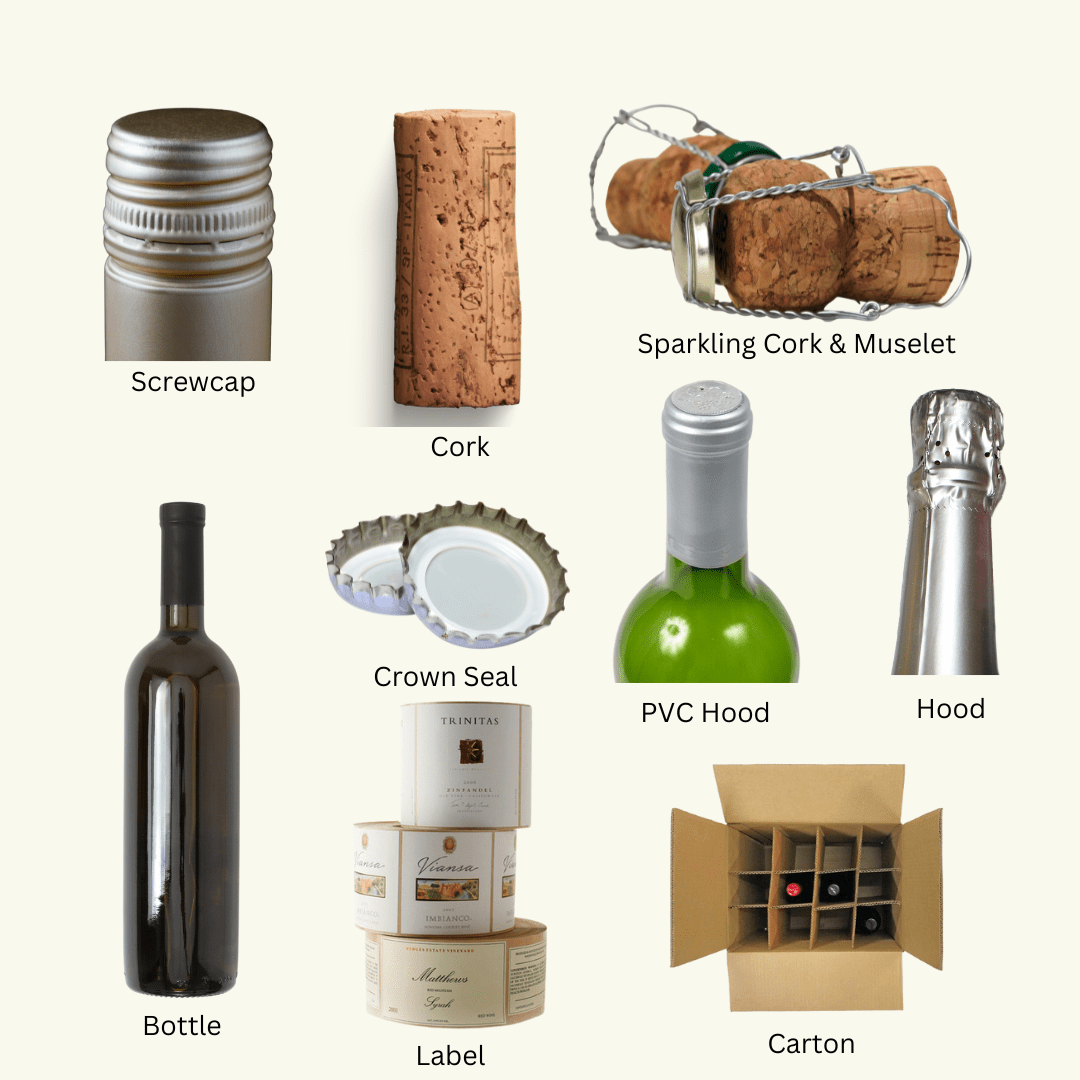What goes into glass bottling packaging runs?
Glass bottling packaging runs may appear seamless and simple when witnessing the packaging lines operate. However, there’s an incredible amount of background work that goes into facilitating a glass bottling packaging run. We’ve outlined below all the requirements that are organised before and during a glass bottling packaging run.
Dry goods
Glass bottling packaging runs require a number of dry goods to complete the bottling of a beverage product into a glass bottle. Firstly, glass bottles are required. This is the first dry good utilised in a glass bottle packaging run. On our glass bottling lines at IDL the next dry good utilised depends on the beverage product being produced.
If the beverage product is still wine, it may be a cork and a PVC hood, or a screwcap. If it’s sparkling wine, it’s a sparkling cork then a muselet, and a hood. If it’s cider or an RTD based product, it's a crown seal (pry or twist off).
Next the bottles head to the labeler to have their label applied. This may be a front, back and neck label, or any combination of the three potential label areas. If the product is wine based, the glass bottles are lifted into the 6 or 12 pack cartons, before the tops are glued down. A cardboard divider may also be incorporated into the box. If the product is a cider or RTD product, a cardboard cluster wrap is required to wrap 6 bottles together. Then a wrap-around carton is required which holds four of the 6 pack clusters to make a full slab.
There are a number of various dry goods required for a glass bottling packaging run that the consumer will never see or may not recognise. A pallet is required to stack the finished cases onto, as well as pallet wrapping to hold the pallet together during transport. Ink is required for the printing of the lot number, time stamp and best-before date on the bottle and carton. Velcorin is another dry good included in some beverage products here at IDL. This is added in line. If a product is expected to contain bubbles or fizz, it will be dosed with C02 in the line too, at the carbonator stage.
QA Checks (during packaging)
Quality Assurance checks are a vital step in glass bottling packaging runs. Here at IDL we have a designated Quality Assurance station and staff member on each packaging line. The QA stations checks a number of things including ensuring the label being utilised on the line matches the expected label, the carton is the correct print, is being glued together properly, contains the correct number of bottles, lot number and best before date coding is occurring and correct, and that the individual bottles and carton are presented to a high standard ie: no glue on outside of bottles or cartons, cartons and sealed evenly and label heights are correct and even.
Laboratory analysis
The beverage product that is to be filled into the glass bottle has analysis completed on it before the liquid is sent to packaging. IDL’s team of Laboratory Technicians complete pre, during and post packaging testing - such tests include alcohol %, pH, total acidity, turbidity, Glucose-Fructose (residual sugars), specific gravity, Co2, Do2 and carbonation.
See also:
